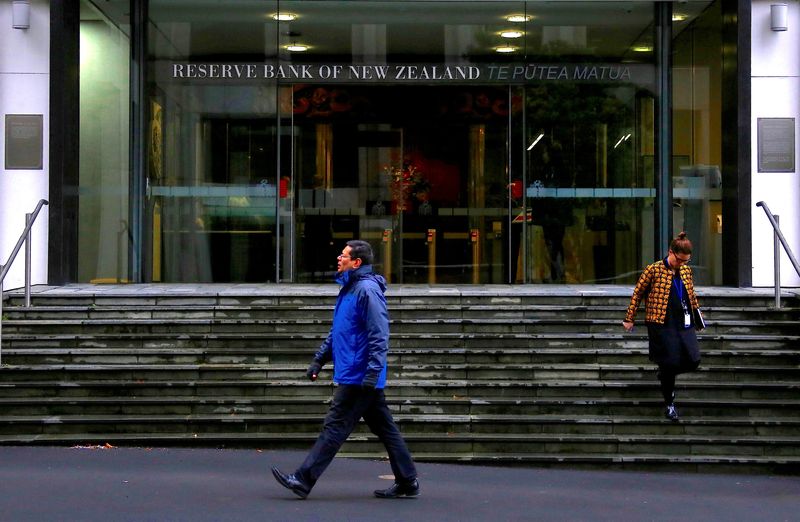By Lucy Craymer
WELLINGTON (Reuters) -New Zealand's central bank held its cash rate steady at 5.5% on Wednesday but slightly pushed out when it expects to start cutting borrowing costs to 2025, which provided some support for the New Zealand dollar.
"The committee agreed that the OCR (official cash rate) needs to stay at restrictive levels for the foreseeable future to ensure annual consumer price inflation returns to the 1% to 3% target range," the bank said in its policy statement.
It said conditional on its central economic outlook, the cash rate would need to remain at around its current level of 5.5% for slightly longer than was previously assumed to meet its inflation and employment objectives.
The RBNZ continues to forecast the official cash rate (OCR) to remain at 5.5% with around a 40% chance of a further 25 basis point hike to 5.75% in 2024, according to the monetary policy review (MPR) accompanying the rate decision.
Its track now indicates it does not expect to cut until the first half of 2025, much later than expected by economists, who had forecast cuts to begin in the second quarter of next year.
ASB Senior Economist Mark Smith said that the hurdle to cash moves in either direction is high as going harder and reasonably early has afforded them the luxury to sit tight.
"Still, they have signalled that they will not tolerate unwelcome stickiness in the inflation numbers," he said.
The New Zealand dollar bounced off lows following the statement to trade up 0.2% at $0.5963, while New Zealand bank bill futures slipped as the market priced in slightly more risk of another hike.
A front-runner in withdrawing pandemic-era stimulus among its peers, the RBNZ has battled to curb inflation, lifting rates by 525 basis points since October 2021 in the most aggressive tightening since the official cash rate was introduced in 1999.
New Zealand's annual inflation has come off in recent months and is currently 6.0%, just below a three-decade high of 6.7%, with expectations it will return to the central bank's 1% to 3% target by the second half of 2024.
The rate hikes have sharply slowed the economy, now in a technical recession following two quarters of negative growth.

Paul Bloxham, chief economist for HSBC in Australia and New Zealand, said HSBC still expects the central bank to cut rates in the second quarter of next year.
"Economic activity has clearly slowed, even if it does have a bit more momentum than expected, and the economy is dis-inflating. In addition, the full impact of the monetary tightening already delivered is still to pass through to the economy," he said in a research note.